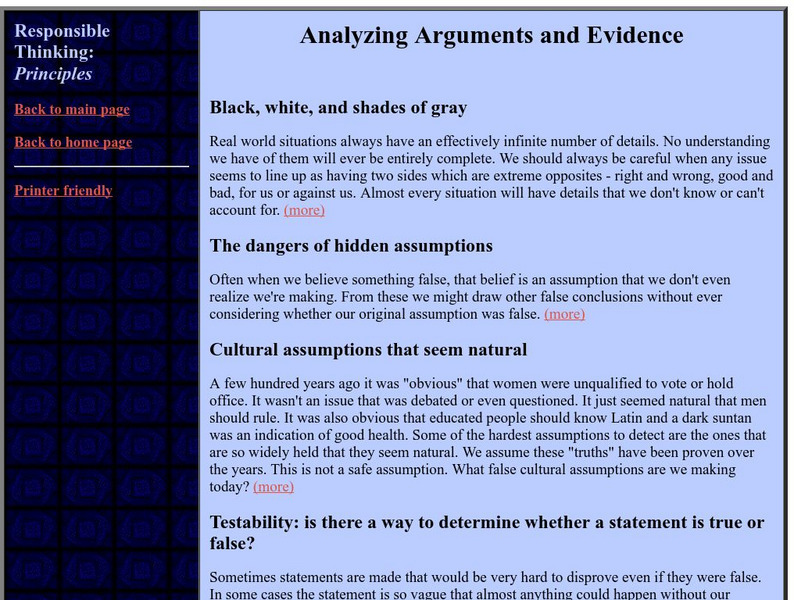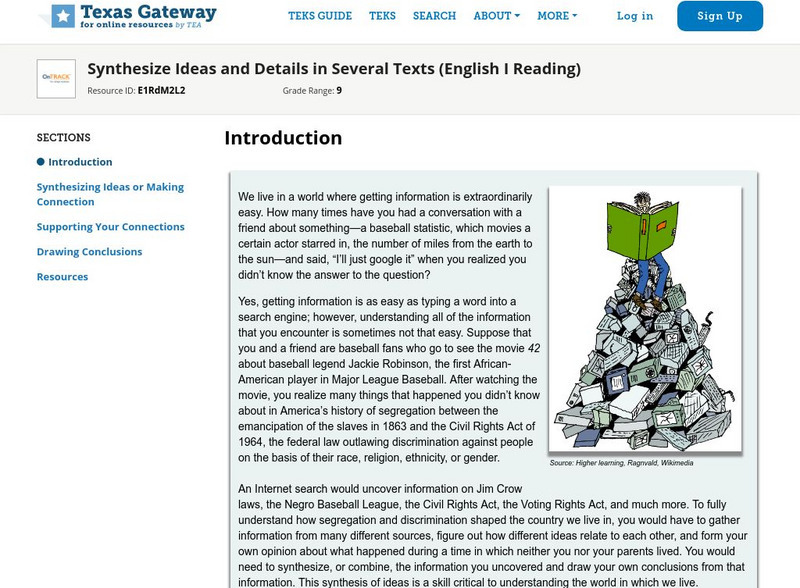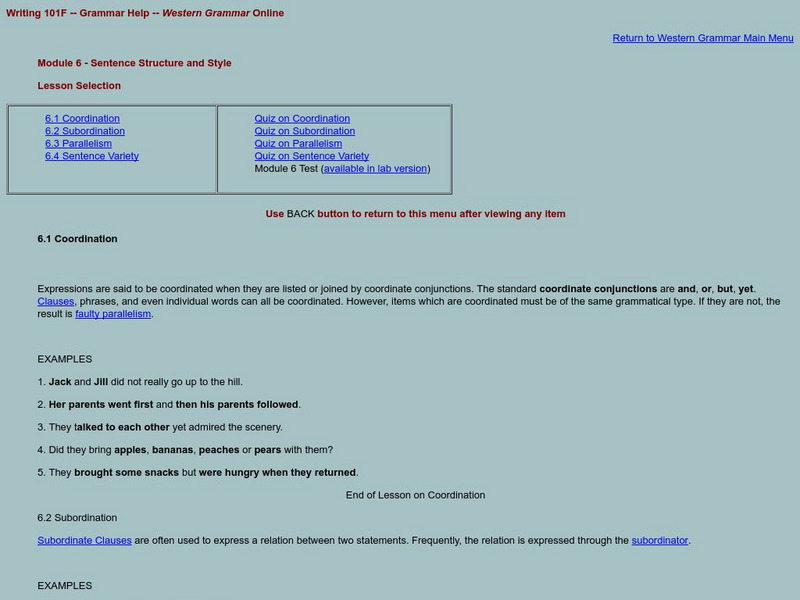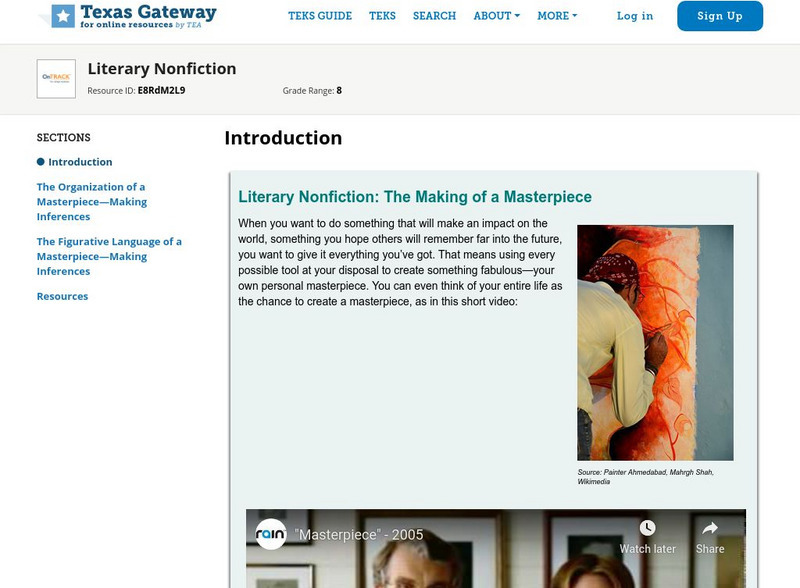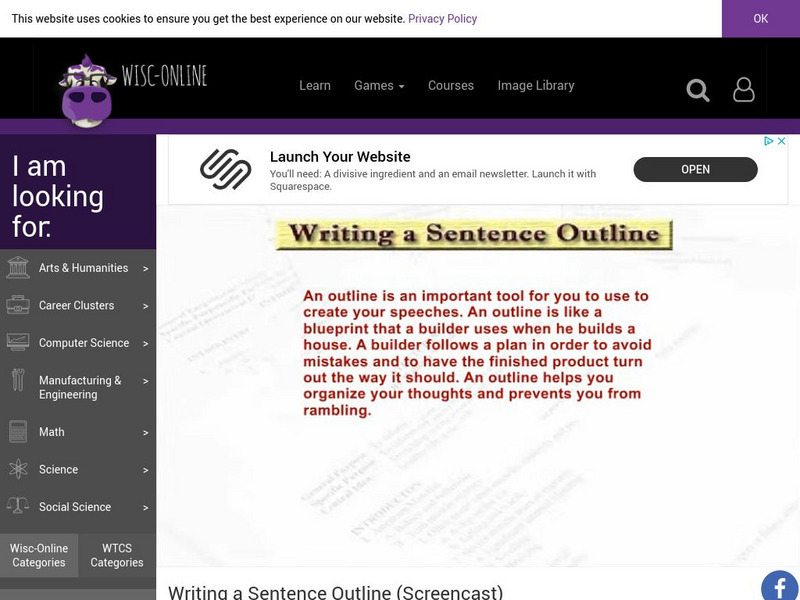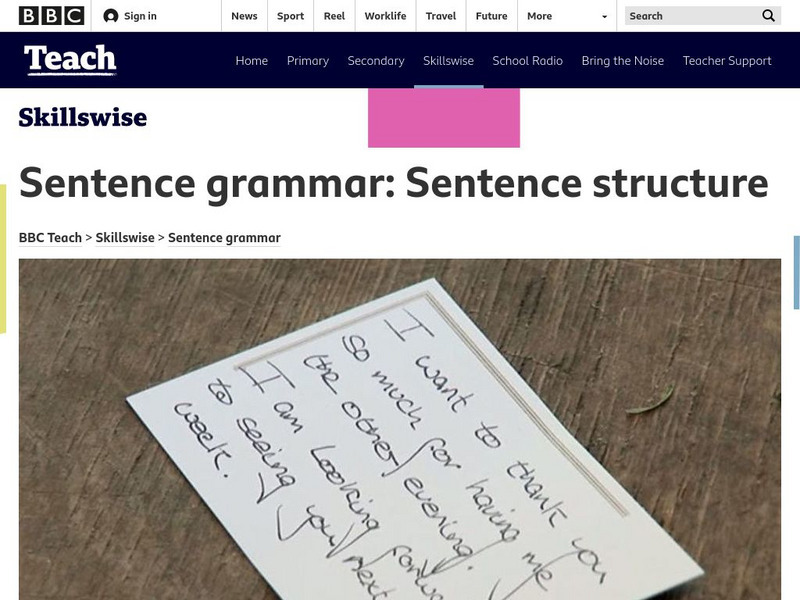Harvard University
Harvard College Writing Center: How to Do a Close Reading
A brief explanation of the tasks involved in doing a close reading in preparation for writing. This writer breaks the process into three steps which involve annotating the text, looking for patterns, and asking questions of the text.
Polk Brothers Foundation Center for Urban Education at DePaul University
De Paul University: Center for Urban Education: Evaluate the Strength of Evidence [Pdf]
This resource provides a downloadable worksheet that will assist students after they read a piece of nonfiction. Students will answer guided questions to help them determine the strength of evidence used when supporting a claim....
Other
Responsible Thinking: Analyzing Arguments and Evidence
Contains many points to consider when analyzing someone's arguments and evidence, such as the hidden assumptions, cultural assumptions, and testability. Each is explained in a short paragraph with a link to additional discussions on...
Grammarly
Grammarly Handbook: Main Ideas and Supporting Ideas
An explanation and examples of main ideas and supporting details.
Texas Education Agency
Texas Gateway: Synthesize Ideas and Details in Several Texts (English I Reading)
Synthesize ideas and details in texts and support the connections with textual evidence.
Texas Education Agency
Texas Gateway: Distinguish Between Summary and Critique (English I Reading)
Learn how to summarize a text in contrast to writing a critique that takes a position.
Other
Instruct Uwo: Module 6 Sentence Structure and Style
This site discusses several characteristics of writing: coordination, subordination, parallelism, and sentence variety. Each section includes a brief discussion with examples. There are also quizzes and additional links for each section.
Texas Education Agency
Texas Gateway: Literary Nonfiction
Learn how to analyze literary nonfiction, particularly speeches, by making inferences and drawing conclusions based on evidence in the text.
Texas Education Agency
Texas Gateway: Effective Introduction and Conclusion Sentence Structure Variety
Write effective introductions and conclusions with a controlling idea or thesis, using a variety of sentence patterns.
Other
Meredith Grammar Review: Clauses & Phrases
This online grammar guide provides instructions and examples on punctuating combinations of phrases and clauses. It also provides interactive exercises throughout the chapter.
University at Buffalo
Writing Strategies
Provides some help with the difficult job of teaching writing by providing some strategies for students to follow. Easy to navigate from the top of the page, strategies are categorized into grade 3-6 and 6-12, in addition to lesson plan...
Lumen Learning
Lumen: Writing Skills: Key Sentences
This lesson focuses on effective paragraph construction especially topic sentences.
Lumen Learning
Lumen: Writing Skills: Revising Paragraphs
This lesson focuses on evaluating the structure of paragraphs and revising them.
Wisc-Online
Wisc Online: Writing a Sentence Outline
In this learning module, students will learn how to write a sentence outline and then practice filling out an outline and writing their own outline for a speech.
BBC
Bbc: Skillswise: Sentence Structure
This Skillswise site focuses on sentence structure. Included are a video about why about sentence structure is important, fact sheets and worksheets for instruction, quizzes on the information presented, and games to practice the skill....
Texas Education Agency
Texas Gateway: Strategies for Revising: Practice 3
[Accessible by TX Educators. Free Registration/Login Required] In this lesson, you will review the different types of clauses and sentences. You will also use editing strategies to help you add variety to your sentences. A step-by-step...
Texas Education Agency
Texas Gateway: Effective Intro & Conclusion & Variety of Sentence Structures
[Accessible by TX Educators. Free Registration/Login Required] This lesson focuses on the introduction which establishes the context for the information that will form the body of the essay, connecting the conclusion to the introduction,...
Wisc-Online
Wisc Online: Summary Writing
In this learning module, students demonstrate an understanding of summary writing by reading step-by-step instructions and then summarizing short paragraphs. Examples of summaries that are poorly written, as well as those that are...
Rutgers University
Rutgers University: Guide to Grammar and Style: Paragraphs
At this site, Jack Lynch sets forth many guidelines for writing good paragraphs, from length, to specific word choice, to proofreading, to voice, to punctuation. Links are provided to help the student seeking additional clarification.
Khan Academy
Khan Academy: Match Structure Learn More
"Match the structure" questions on the LSAT test your ability to determine how an argument goes. It begins with an argument in the stimulus and then asks you to choose another argument from among the choices that is structurally the...
Khan Academy
Khan Academy: Purpose of Reference Quick Guide
Purpose of reference questions ask you to identify why the author referred to something in a certain part of the text. In other words, what was the point of including the reference?
Khan Academy
Khan Academy: Principles and Analogies Quick Guide
Analogy questions ask you to identify a situation that is analogous to the one described in the passage. Principle questions ask you to identify the principle that is at work. This guide offers tips on how to recognize and respond to...
Khan Academy
Khan Academy: Main Point Quick Guide
The first question in most Reading Comprehension sets will ask you to identify the statement that best expresses the central idea or the main point that the passage as a whole is designed to convey.
Khan Academy
Khan Academy: Strengthen and Weaken Quick Guide
A quick guide to approaching test questions that ask you to identify info that would strengthen or weaken an argument.



![De Paul University: Center for Urban Education: Evaluate the Strength of Evidence [Pdf] Activity De Paul University: Center for Urban Education: Evaluate the Strength of Evidence [Pdf] Activity](https://d15y2dacu3jp90.cloudfront.net/images/attachment_defaults/resource/large/FPO-knovation.png)
